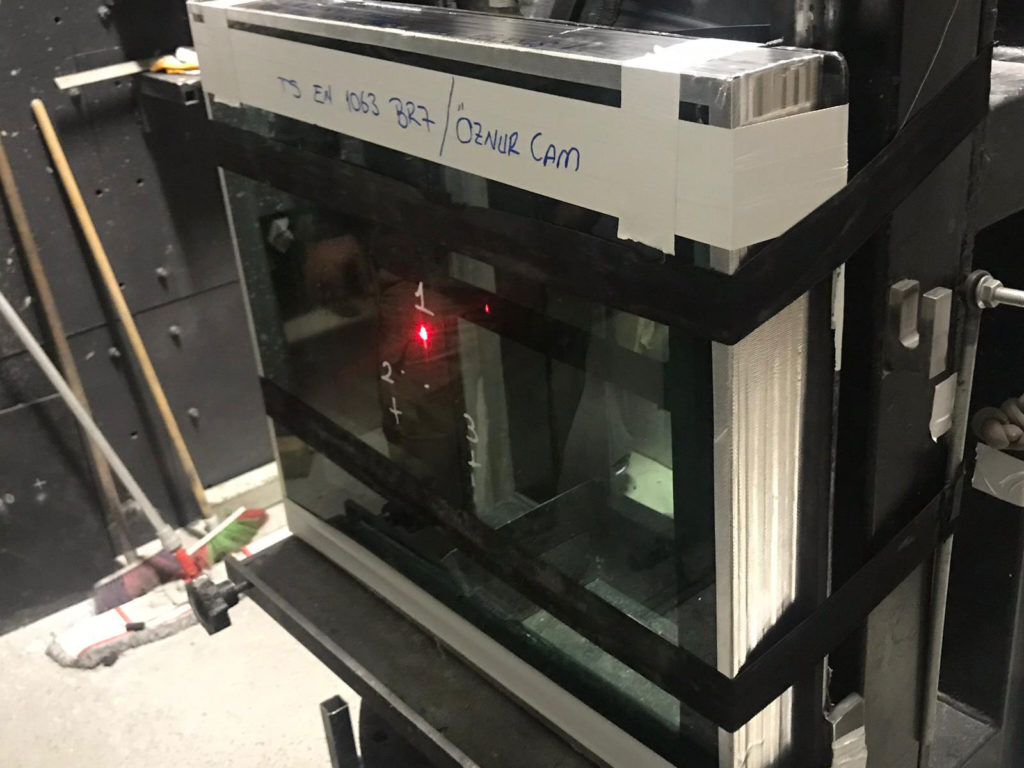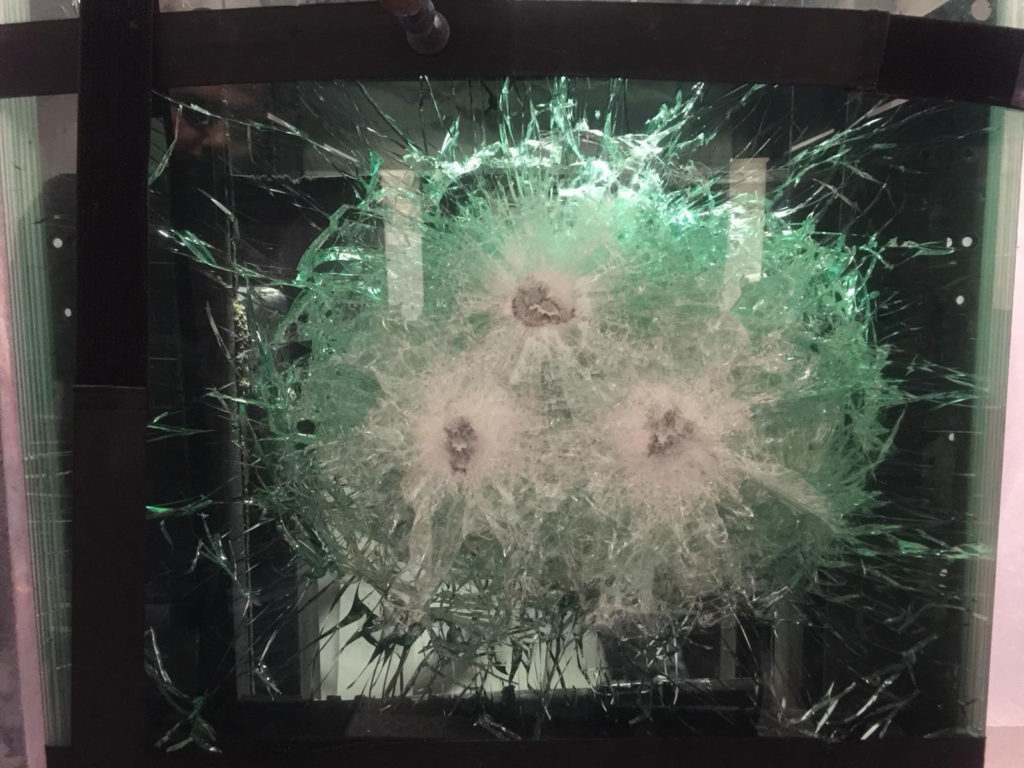Bullet Proof Glass
Bulletproof glass consists of multiple layers of hard glass with interlayers of various plastics. Sometimes there is a layer of polycarbonate (a type of hard plastic) or a layer of plastic film. Otherwise dangerous fragments of glass or plastic can be shattered by the impact of a bullet. This sandwich layer is called a laminate. It can be ten times thicker than a single sheet of ordinary glass and is usually very heavy.
When a bullet hits a bulletproof glass, its energy spreads sideways through the layers. Because the energy is split between different pieces of glass and plastic and spread over a large area, it is quickly absorbed. The bullet slows down so much that it no longer has enough energy to penetrate, or if it does, it does too much damage. Even if the glass panels shatter, the plastic sheets stop them flying. Think of bulletproof glass as energy absorbing glass. This way you can get a better idea of how it works.


Bullet Proof Glasses
Bulletproof glasses are multi-layer lamination units produced according to EN1063 standard and provide protection against armed attacks. When necessary, the glass layers can be tempered. According to the NS class in the EN1063 standard, it is also produced with polycarbonate sheet application to prevent the distribution of glass particles towards the inside.
- Bulletproof glass is usually asymmetrical and when applied in the correct position, it is bulletproof.
- When a bulletproof multilayer laminating unit is applied to double glazing, the laminating unit should be on the other side of the potential impact.

